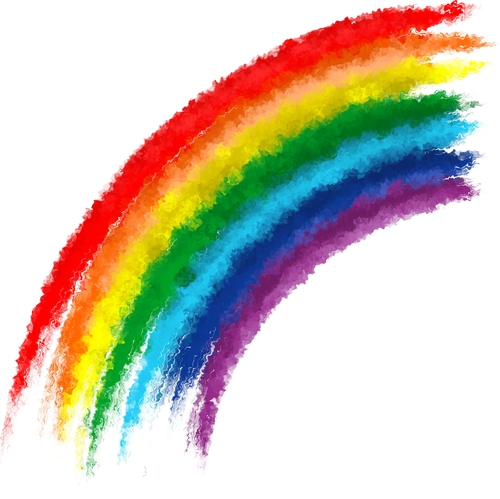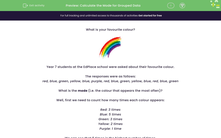What is your favourite colour?

Year 7 students at the EdPlace school were asked about their favourite colour.
The responses were as follows:
red, blue, green, yellow, blue, purple, red, blue, green, yellow, blue, red, blue, green
What is the mode (i.e. the colour that appears the most often)?
Well, first we need to count how many times each colour appears:
Red: 3 times
Blue: 5 times
Green: 3 times
Yellow: 2 times
Purple: 1 time
We can see that 5 times is the highest number of times.
The colour that appeared 5 times is blue.
So the mode is blue.

The counting and organising of the data was a bit tedious though, wasn't it?!
Luckily, we have a better way to represent the information instead - a frequency table!
| Colour | Frequency |
| Red | 3 |
| Blue | 5 |
| Green | 3 |
| Yellow | 2 |
| Purple | 1 |
Isn't this so much nicer?
If we want to identify the mode from a table like this, we just need to find which colour here, has the highest frequency.
The highest number in the frequency column is 5.
But let's be careful, this is not the mode!
To find the mode, we need to look at what colour has the frequency of 5.
That is the colour blue, so blue is our mode.
.jpg)
Let's have a look at one more example:
In a survey about the number of siblings students in a Year 7 class have, the data was grouped as follows:
| Number of Siblings | Frequency |
|---|---|
| 0-1 | 5 |
| 2-3 | 3 |
| 4-5 | 5 |
| 6-7 | 2 |
What is the mode?
To find the mode, we need to look at what answer has the highest frequency.
But wait!
There are two answers (0-1 and 4-5) that have the highest frequency of 5.
Therefore there is no mode.
This happens any time that there is no single answer that has the highest frequency.
Ready to put this into practice?








